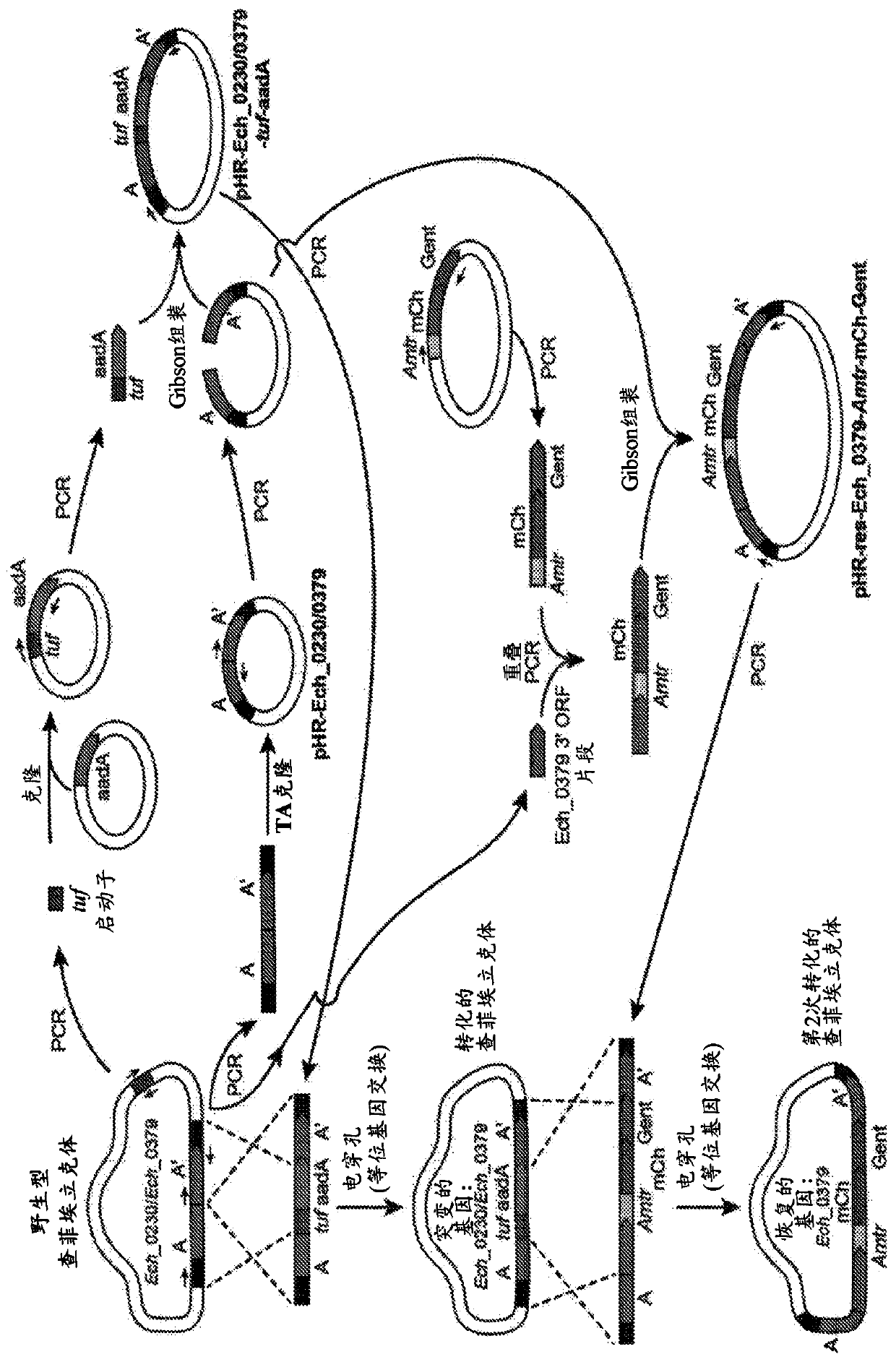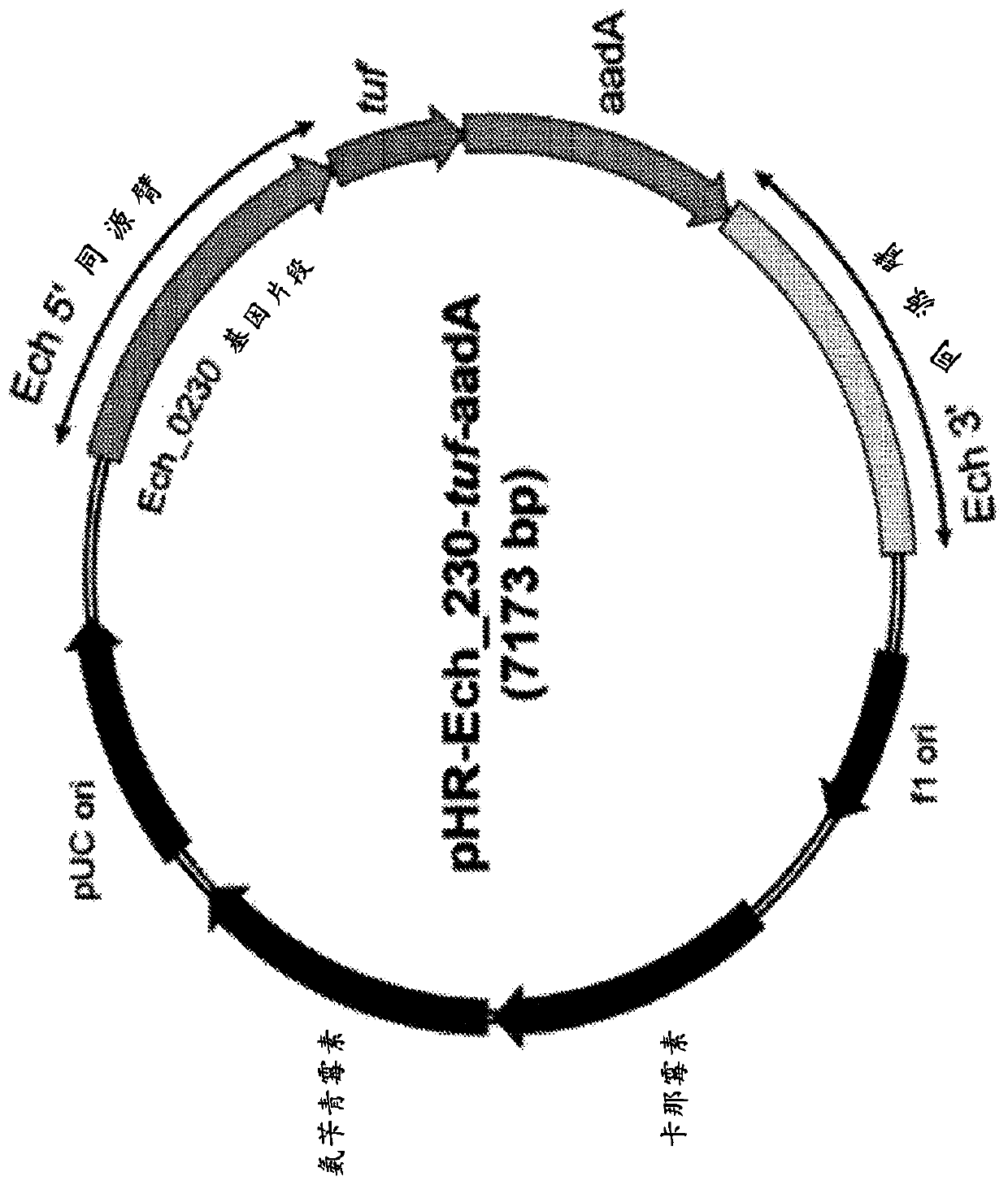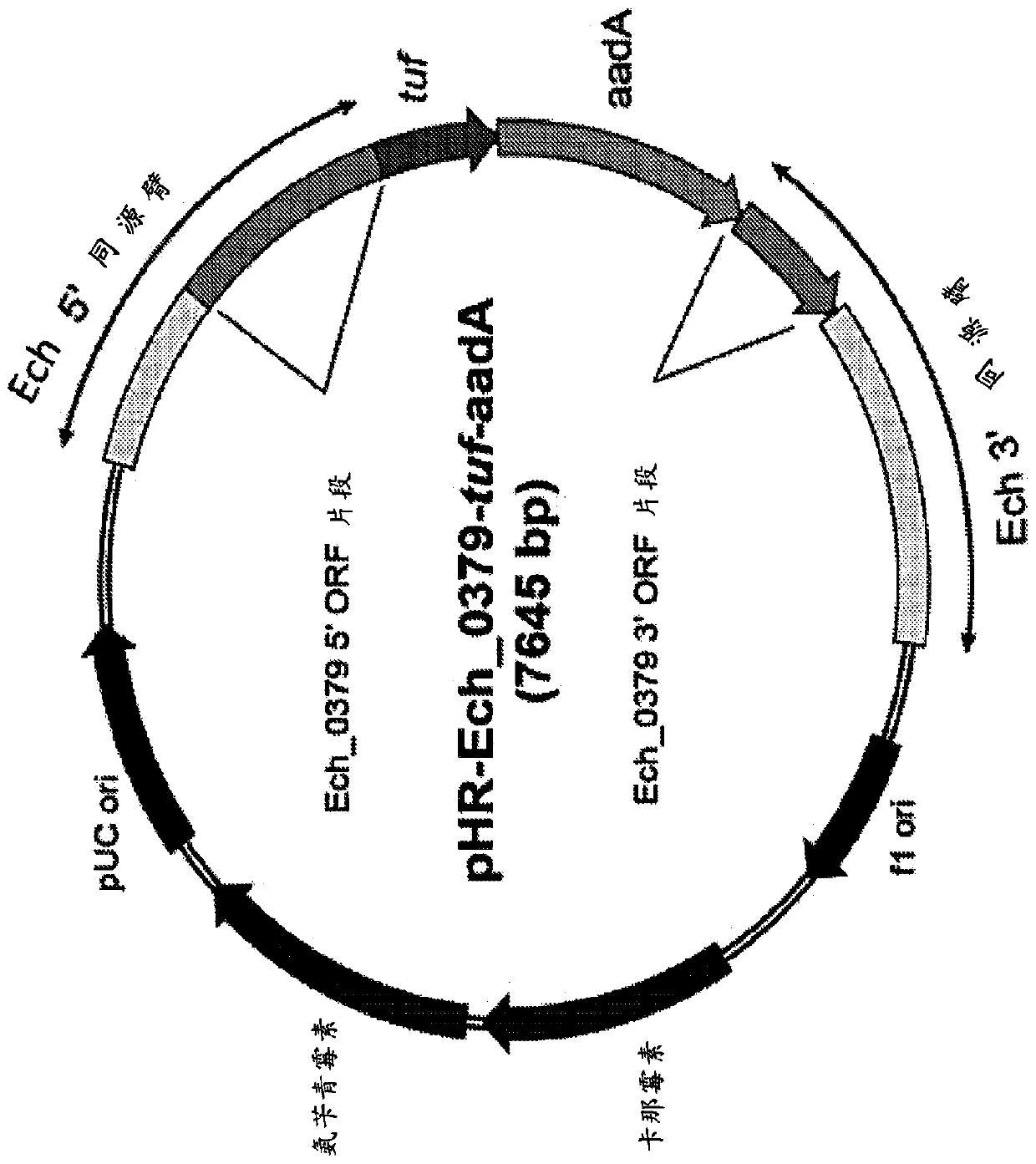Targeted gene disruption methods and immunogenic compositions
A technology of immunogenicity and composition, applied in the field of targeted gene destruction and immunogenic composition
- Summary
- Abstract
- Description
- Claims
- Application Information
AI Technical Summary
Problems solved by technology
Method used
Image
Examples
Embodiment 1
[0074] Materials and methods
[0075] In Vitro Culture of Ehrlichia Chaffee . In the ISE6 tick cell line, Ixodes scapularis (I. scapularis) embryonic cell line for continuous culture of Arkansas isolates of Ehrlichia chaffae. Ehrlichia chaffeensis was also cultured using a canine macrophage cell line (DH82) following a previously reported protocol (Walker, D.H., Paddocl, C.D. and Dumler, J.S., Med Clin North Am; 92, 1345-1361 (2008)).
[0076] Construction of Homologous Recombination Plasmids and Fragments . All primers used to prepare the recombinant plasmid constructs developed for targeted mutagenesis experiments are described in Table 1. Table 2 lists the plasmids used and prepared in this study.
[0077] Table 1: List of oligonucleotides used in this study.
[0078] Capitalized sequences are gene-specific. The lowercase font sequences are overlaps assembled by Gibson.
[0079]
[0080]
[0081]
[0082]
[0083] *If a primer is listed multiple times...
Embodiment 2
[0093] Materials and methods. In Vitro Culture of Ehrlichia canis and Anaplasma phagocytophilum . In ISA6 Continuous culture of Ehrlichia canis and Anaplasma phagocytophilum in a tick cell line, an Ixodes scapularis (I. scapularis) embryonic cell line.
[0094] Construction of Homologous Recombination Plasmids and Fragments . All primers used to prepare recombinant plasmid constructs were developed for targeted mutagenesis experiments following a similar protocol to what we described for Ehrlichia chaffeensis, except that gene-targeting specific primers for this pathogen were used. Similarly, the detailed molecular steps followed to prepare constructs for allelic exchange mutagenesis experiments were the same as those for Ehrlichia chaffae by following standard molecular methods (Sambrook, J. & Russell, D.W. Molecular cloning: a laboratory manual. Cold Spring Harbor Laboratory, Cold Spring Harbor, New York. (2001)) described a similar procedure. Briefly, approximately 2...
Embodiment 3
[0100] Materials and Methods
[0101] In Vitro Culture and Recovery of Cell-Free Ehrlichia Chaffee
PUM
| Property | Measurement | Unit |
|---|---|---|
| Diameter | aaaaa | aaaaa |
Abstract
Description
Claims
Application Information
 Login to View More
Login to View More - R&D
- Intellectual Property
- Life Sciences
- Materials
- Tech Scout
- Unparalleled Data Quality
- Higher Quality Content
- 60% Fewer Hallucinations
Browse by: Latest US Patents, China's latest patents, Technical Efficacy Thesaurus, Application Domain, Technology Topic, Popular Technical Reports.
© 2025 PatSnap. All rights reserved.Legal|Privacy policy|Modern Slavery Act Transparency Statement|Sitemap|About US| Contact US: help@patsnap.com



